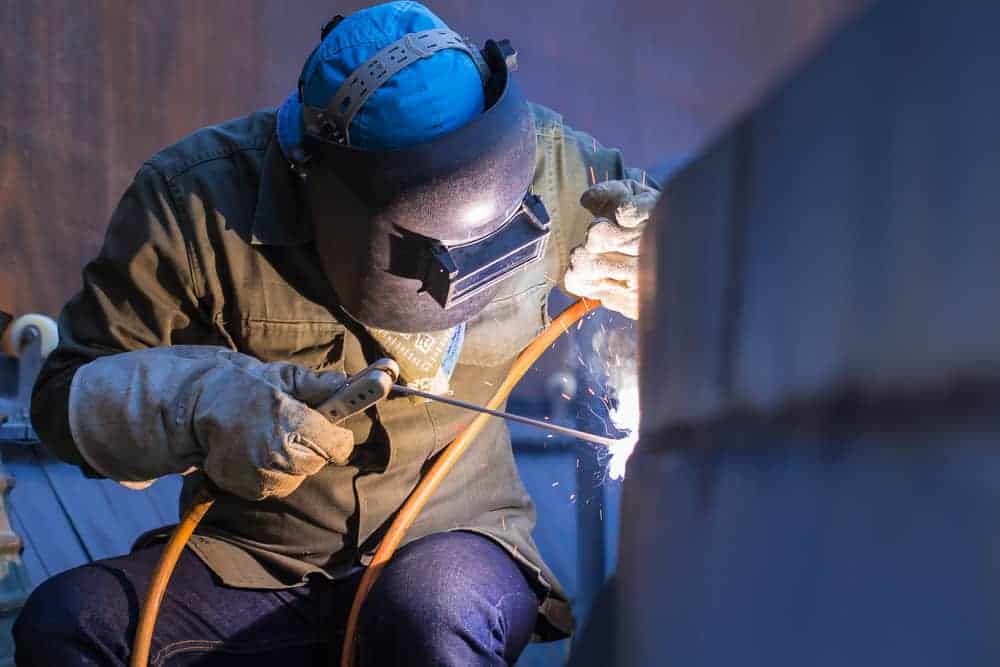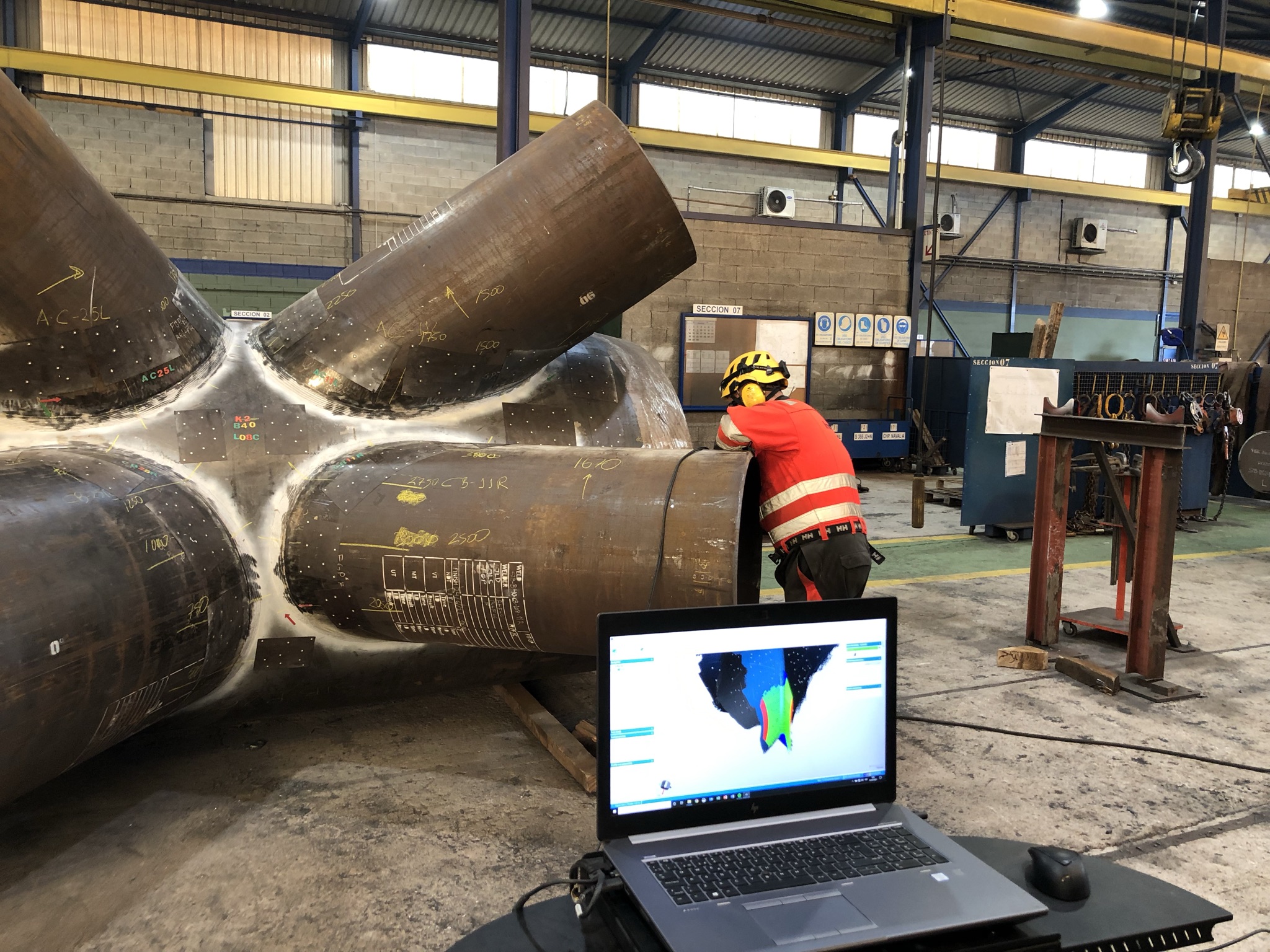The Necessary Role of Welding Evaluation: Understanding the Procedures, Devices, and Criteria That Govern Quality Analysis in Welding Operations
Welding evaluation is an essential element of quality control in welding procedures, ensuring the structural stability and safety and security of welded assemblies. By using a series of treatments, from pre-weld evaluations to advanced non-destructive screening methods, assessors systematically assess weld quality against rigorous industry requirements. The devices used in these procedures is vital for recognizing prospective problems that might compromise efficiency. Recognizing the interaction between examination techniques and governing compliance raises vital questions about the challenges dealt with in keeping these important procedures. What implications do these elements carry the overall efficiency of welding procedures?
Importance of Welding Examination
Welding evaluation is essential in making certain the honesty and safety and security of welded structures, as it often works as the last checkpoint prior to elements are placed into solution. The value of this evaluation hinges on its ability to recognize potential problems that may jeopardize the performance and longevity of welded joints. Provided the high risks involved, particularly in sectors such as building and construction, aerospace, and auto, extensive examination procedures are important.
Welding defects can emerge from various aspects, consisting of inappropriate methods, inadequate tools, or inappropriate materials. Failure to find these issues can lead to tragic repercussions, consisting of structural failures, which might cause injury, loss of life, and substantial monetary responsibilities. Welding examination provides a systematic technique to examine the top quality of welds, guaranteeing conformity with industry criteria and regulative demands.
Moreover, effective welding evaluation contributes to improving general performance by lessening rework and making certain that projects continue to be on schedule. By fostering a society of top quality assurance, organizations can also enhance their credibility and client trust fund. Basically, the significance of welding inspection can not be overemphasized, as it plays a critical function in securing both human lives and financial investments in framework.
Secret Examination Treatments
A detailed method to evaluation procedures is essential for ensuring the high quality and dependability of bonded joints. Reliable evaluation begins with pre-weld analyses, which include reviewing welding specifications, material residential or commercial properties, and joint layouts to determine prospective obstacles. This preparation stage establishes a baseline for top quality expectations.
During the welding process, in-process inspections are critical. Inspectors keep an eye on specifications such as heat input, travel speed, and electrode angle to guarantee compliance with established standards. Visual inspections are the initial line of protection, enabling the identification of surface issues, such as fractures, porosity, or insufficient blend.
Post-weld inspections include advanced strategies to assess the stability of the joint. This might consist of non-destructive testing (NDT) methods such as ultrasonic testing, radiographic screening, or magnetic bit testing. These techniques offer much deeper insights into the internal framework of the weld, exposing possible flaws that might not show up externally.
Documents plays an integral role throughout the evaluation procedure. Detailed documents of assessments, consisting of findings and rehabilitative actions, make certain traceability and liability, inevitably adding to continual renovation in welding methods and general quality control.
Important Equipment for Examination
Efficient examination depends on the use of specialized tools designed to examine the quality and stability of welded joints. Trick devices in this process consist of visual examination tools, such as amplifying glasses and borescopes, which permit examiners to identify surface defects and abnormalities. In addition, ultrasonic screening (UT) tools plays a crucial function by utilizing high-frequency acoustic waves to find internal problems within welds, making certain that hidden weak points are recognized before they result in failure.
Radiographic screening (RT) is an additional necessary approach, using X-rays or gamma rays to produce photos of the welds, disclosing inner issues that may not be visible through other evaluation approaches - Houston Welding Inspection. Magnetic fragment testing (MT) is used for ferromagnetic materials, permitting inspectors to locate surface area and near-surface problems by applying fine particles and magnetic areas
Dye penetrant testing (PT) is also substantial, entailing the application of a fluorescent dye to reveal surface fractures and stoppages. Each of these methods and devices adds to a detailed inspection approach, making certain that bonded frameworks meet the necessary quality requirements and remain risk-free for usage in their respective applications.

Industry Criteria and Regulations
Quality assurance in welding evaluation is dramatically influenced by market requirements and guidelines that govern methods and make sure security. These criteria function as benchmarks for quality, outlining the necessary procedures for screening, paperwork, and inspection. Secret organizations such as the American Welding Society (AWS), the American Society of Mechanical Designers (ASME), and the International Organization for Standardization (ISO) establish guidelines that welding experts must adhere to throughout the examination procedure.
Compliance with these criteria is not just a matter of governing responsibility but additionally a vital element of risk monitoring in welding operations. They incorporate various facets, including material choice, welding methods, and qualifications of personnel. For example, AWS D1.1 details structural welding needs, while ISO 3834 specifies top quality demands for welding procedures.
In addition, sector laws dictate the essential credentials for welding assessors, requiring certifications that affirm their expertise. This placement with requirements makes certain that assessments are performed more information consistently and accurately, ultimately guarding the honesty of welded frameworks. Sticking to these market criteria and policies is paramount in promoting operational efficiency and keeping public count on in welding techniques.
Challenges in Welding Inspection


Welding assessment faces countless challenges that can impact the dependability and security of welded structures. One considerable difficulty is the complexity of the welding refines themselves, which can differ greatly relying on products, joint arrangements, and environmental problems. This variability requires a thorough understanding of diverse inspection techniques and their ideal applications.
One more difficulty hinges on the advancing nature of welding innovation. As new materials and approaches are presented, assessors need to constantly upgrade their expertise and abilities to successfully review the quality of welds. Furthermore, the physical ease of access of weld places can prevent examination initiatives, particularly in constrained or high-risk atmospheres.
In addition, human elements play a vital duty in welding assessment. Houston Welding Inspection. The subjective nature of visual examinations can lead to incongruities, as different inspectors might interpret the exact same weld in a different way. This highlights the these details relevance of standard training and accreditation for examiners to make certain a consistent strategy to high quality assessment
Finally, the assimilation of innovative innovations, such as automated assessments and expert system, presents both difficulties and opportunities. While these technologies can improve accuracy and effectiveness, they also need considerable financial investment and expertise to apply effectively. Dealing with these obstacles is vital for keeping the honesty of bonded frameworks.
Conclusion
Welding examination is important for ensuring the security and stability of welded structures. Through strenuous assessment procedures, making use of specialized tools, and adherence to identified sector criteria, the quality of welding procedures can be systematically analyzed. Difficulties continue the assessment procedure, yet the application of efficient approaches can minimize risks associated with architectural failures. Eventually, a durable welding inspection framework not just guarantees conformity with laws however additionally enhances total functional efficiency get redirected here and reliability.
Welding examination is a vital component of top quality assurance in welding operations, making certain the structural honesty and security of bonded settings up.Welding evaluation is vital in making certain the stability and security of welded frameworks, as it frequently serves as the last checkpoint before parts are put right into solution. Welding evaluation gives a systematic method to assess the high quality of welds, making certain conformity with market criteria and governing needs.
Quality assurance in welding evaluation is dramatically influenced by sector standards and policies that regulate methods and make sure safety. Secret companies such as the American Welding Culture (AWS), the American Society of Mechanical Engineers (ASME), and the International Company for Standardization (ISO) establish standards that welding experts have to stick to throughout the examination procedure.